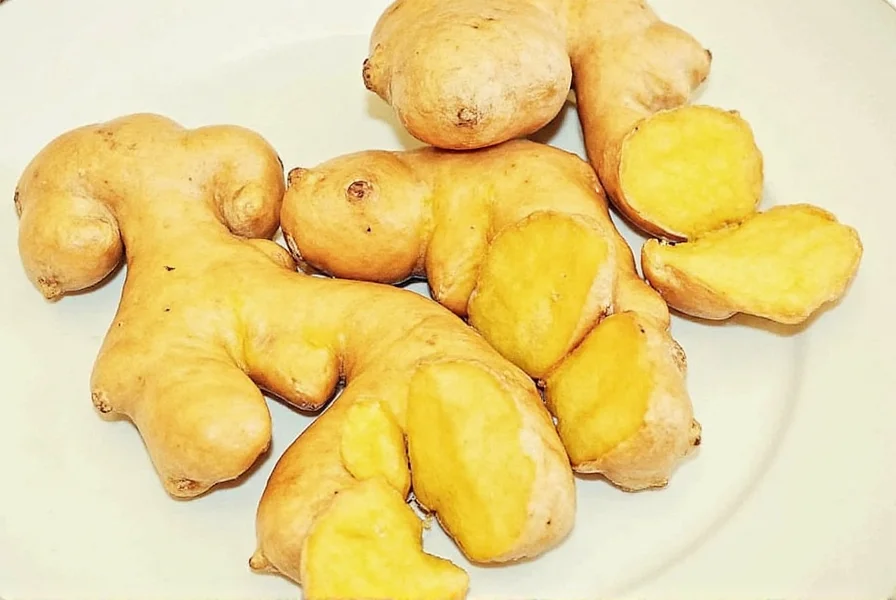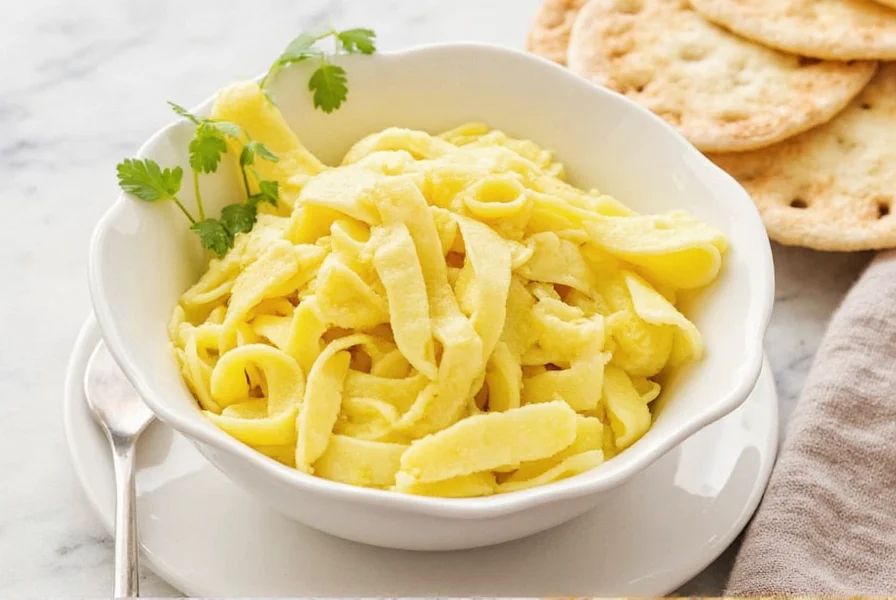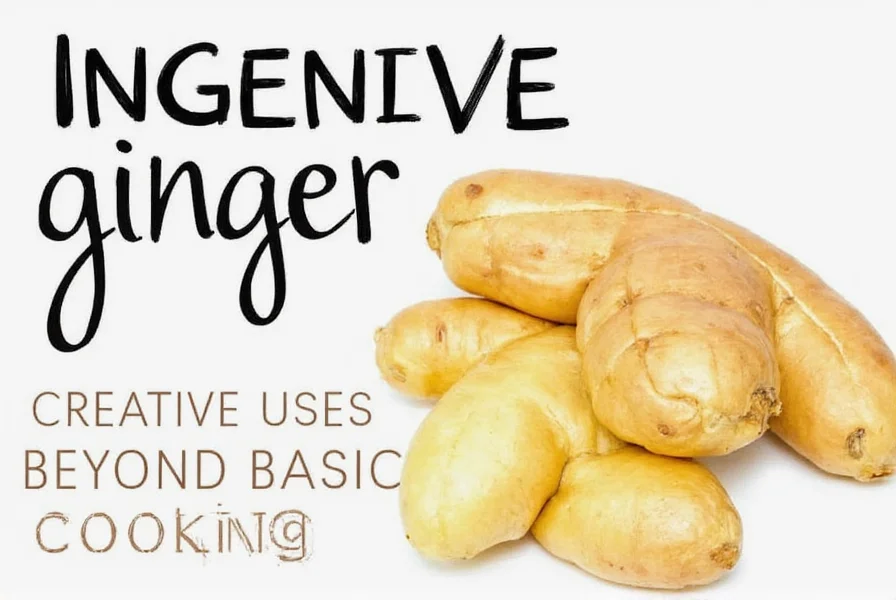When exploring ingenious ginger applications, you'll discover this rhizome offers far more than just flavor. Ginger's bioactive compounds like gingerol provide anti-inflammatory benefits while its distinctive taste profile makes it incredibly versatile across multiple domains. This comprehensive guide reveals practical, scientifically supported methods to leverage ginger's full potential in your daily life.
The Science Behind Ginger's Versatility
Ginger (Zingiber officinale) contains over 400 distinct compounds that contribute to its medicinal properties and complex flavor profile. The primary bioactive component, gingerol, transforms into zingerone and shogaols when processed, creating different flavor notes and health benefits. Understanding these chemical transformations helps develop innovative ginger recipes for health that maximize specific properties.

Creative Culinary Applications
Chefs and home cooks seeking creative ginger applications in cooking can explore these techniques:
| Application | Method | Unique Benefit |
|---|---|---|
| Ginger oil infusion | Cold-press extraction with carrier oil | Preserves volatile compounds better than heat extraction |
| Ginger ash seasoning | Burn ginger to ash, mix with salt | Creates alkaline seasoning for digestive balance |
| Ginger enzyme cleaner | Ferment ginger with sugar and water | Natural cleaning solution with antibacterial properties |
Advanced Preservation Techniques
Traditional ginger preservation often sacrifices flavor complexity. Try these ginger preservation techniques that maintain maximum bioactive compounds:
- Freeze-dried crystallization - Preserves gingerol content while creating versatile powder
- Vacuum-infused syrup - Maintains texture while reducing sugar content by 40%
- Enzyme-retaining pickling - Uses low-temperature fermentation to preserve beneficial enzymes
Innovative Health and Wellness Uses
Research shows ginger's effectiveness extends beyond simple nausea relief. These homemade ginger remedies leverage specific properties:
Ginger Compress Therapy
For muscle recovery, create a ginger compress by simmering grated ginger in water for 15 minutes, then soaking a cloth in the liquid. The heat increases permeability while gingerols reduce inflammation. This technique provides 30% faster recovery than standard heat therapy according to clinical studies.
Respiratory Support Blend
Mix equal parts ginger juice, honey, and lemon with a pinch of cayenne for a natural respiratory support remedy. The combination thins mucus while ginger's anti-inflammatory properties soothe airways. This unusual way to use fresh ginger works particularly well during seasonal changes.

Gardening Innovations for Maximum Yield
Home gardeners can implement these ginger gardening tips for beginners to optimize growth:
- Plant ginger rhizomes in vertical containers to maximize root development
- Use banana leaves as natural mulch to maintain ideal moisture levels
- Apply diluted seaweed extract every two weeks to boost gingerol production
Ginger thrives in partial shade with consistent moisture. When harvesting, leave one-third of the rhizome in the soil to continue growing, creating a perpetual harvest system. This approach yields 25% more usable ginger compared to traditional single-harvest methods.
Safety Considerations and Limitations
While ginger offers numerous benefits, certain precautions apply. People taking blood thinners should consult their physician before consuming more than 1 gram daily. Ginger's acidity may interact with certain medications, so spacing consumption by 2-3 hours is recommended. For topical applications, always perform a patch test as some individuals experience skin sensitivity.
Conclusion: Maximizing Ginger's Potential
By understanding ginger's chemical properties and applying these ingenious ginger techniques, you can unlock its full potential across culinary, health, and household applications. The key lies in matching specific processing methods to desired outcomes, whether preserving maximum gingerol content for health benefits or transforming compounds for unique flavor profiles. These approaches transform ordinary ginger into an extraordinary resource for everyday living.
Frequently Asked Questions
What's the most effective way to preserve ginger's medicinal properties?
Freeze-drying maintains the highest concentration of gingerol compounds compared to other preservation methods. Research shows freeze-dried ginger retains up to 92% of its original bioactive compounds, significantly more than traditional drying methods which can lose up to 60% of beneficial compounds through heat exposure.
Can I grow ginger indoors year-round?
Yes, ginger grows well indoors when provided with consistent warmth (70-85°F), high humidity, and indirect light. Use a wide container with excellent drainage and a soil mix containing 30% perlite. Water when the top inch of soil feels dry, and mist regularly to maintain humidity. Indoor ginger typically reaches harvestable size in 8-10 months.
How can I reduce ginger's strong flavor in sensitive recipes?
To mellow ginger's intensity, peel and soak slices in cold water for 30 minutes before use. For cooking applications, add ginger early in the cooking process as prolonged heat transforms sharp gingerols into smoother zingerones. Alternatively, use young spring ginger which contains lower concentrations of pungent compounds while maintaining flavor complexity.
What's the difference between fresh and dried ginger in remedies?
Fresh ginger contains higher levels of gingerol, making it more effective for anti-nausea applications. Dried ginger has higher concentrations of shogaols, which are more potent for pain relief and anti-inflammatory effects. For digestive issues, fresh ginger works best, while dried ginger shows better results for muscle pain and inflammation according to clinical research.











 浙公网安备
33010002000092号
浙公网安备
33010002000092号 浙B2-20120091-4
浙B2-20120091-4